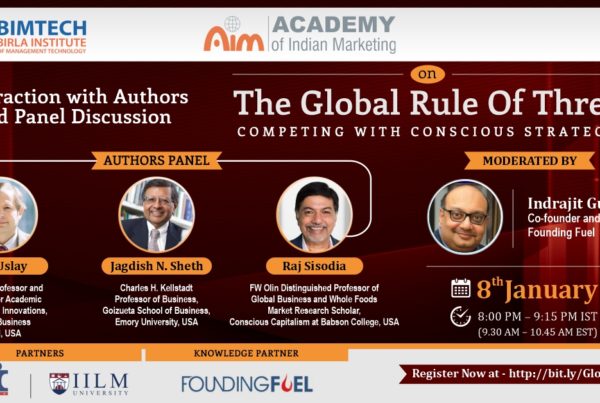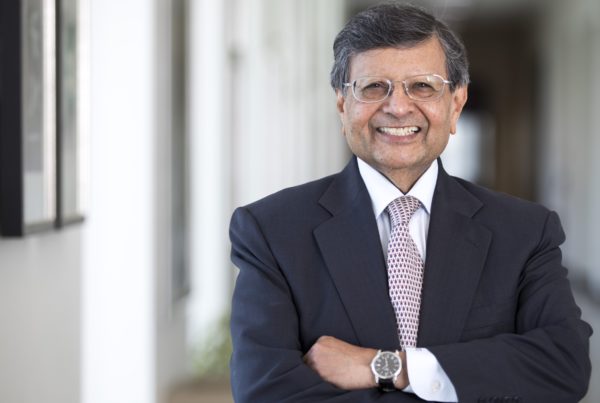Published: Jun 02, 2004 in Knowledge@Emory
When McDonald’s CEO Jim Cantalupo died of a sudden heart attack on April 19 at the age of 60, 43-year-old president and chief operating officer Charlie Bell took over the helm just a few hours later. But is such a smooth internal succession always the rule?
This kind of internal succession used to be the norm, says Jagdish Sheth, a professor of marketing at Emory University’s Goizueta Business School. “In the old days, typically, the chief operating officer became the president, the president became the CEO and the CEO became the chairman. However, I see more and more CEO search processes similar to selection of the President of a University,” Sheth notes.
Why do so many large companies look outside their organizations for leadership today, when presumably they have their own capable candidates waiting in the wings? Goizueta management experts say that the deciding factor may have less to do with the candidate than with how the hiring committee is defining the job.
“The more complex and dynamic the environment is, in general, the more you’re going to see people being brought in at all levels from the outside rather than being brought up from within,” says Giuseppe “Joe” Labianca, a professor of organization and management who specializes in human resource issues.
In some circumstances, rich internal knowledge may not be all that essential for a chief executive, professors say. “Somebody who has come up through the ranks may know the operations throughout the firm much better, but … it may be that the resources that the organization really needs are available from an outsider,” says Russell Coff, a professor of organization and management at Goizueta. Coff argues that because so much of the CEO’s job is outside the company and involves knowing rivals and customers, an external hire who brings in a lot of social capital from outside can actually be quite valuable to the company.
Also, that lack of internal knowledge can benefit the company another way, by making it easier for the company to tackle tough issues head on, Coff says. Sometimes close personal ties can interfere with such unpleasant tasks as downsizing. One case in point: 3M’s hiring of an outside CEO several years ago whose first task was shutting down 800 of the company’s 1500 research projects. “I would say that going to an outsider is a strong signal that the firm recognizes the need for, and perhaps welcomes, a strategic and/or organizational change. Going to a long-time employee signals the perceived need for continuity rather than change,” notes Coff. Companies who turn to outsiders for leadership are typically in one of three situations, according to Sheth:
- The founders have grown the company now to a point where it can no longer be managed the way they managed it. “It’s very successful now, but they cannot continue the journey because as the size and complexity grows there are multiple stakeholders that now must be satisfied.”
- A founder wants to take the company public but doesn’t want the pressures of running a public company, such as dealing with investors or labor issues. “The governance mechanism becomes a lot more unwieldy and they basically don’t enjoy managing it, so they want a professional manager.”
- Or, investors force the company to make a change that the company has been either unwilling or unable to make on its own. “There you believe that the internal culture, the internal processes simply are so strong that having an internal candidate would have no clout really to bring about a change.”
“Generally, the only time [an external hiring of a CEO] works is when the company’s in crisis,” Sheth says. “In a crisis mode, the outsiders really gain tremendous credibility and power to bring about a change.”
But even so, it’s a risky move, Sheth adds. In such a case, a newcomer coming in from the outside typically faces the same political challenges an internal candidate would have faced, but without the allies. This lack of friends can leave the executive vulnerable – as Michael Armstrong, the former CEO of AT&T can attest.
The task faced by the incoming CEO is at least somewhat analogous to the task that the U.S. faces in Iraq, Labianca says – finding and cultivating friendly factions who will support the newcomer’s goals. “Politics doesn’t change whether you’re fighting a war or coming in to try and change a company,” he explains.
Ironically, the stronger a company has been in the past, the more difficult it may be to bring about that change. “If you have a strong internal culture, and the board brings in an outsider, unfortunately, often the outsider is chewed up and spit out often before he or she knows what’s happened to them,” observes Sheth.
Conversely, if that change is successful, it will harm the existing culture. “[W]hen you do that, one of the signals you’re sending is that you’re rejecting the existing culture,” Sheth explains. “There will be a lot of hurt feelings, and many employees may feel that their skills and devotion to the company are no longer valued. As a result, you’re likely to see a huge spike in turnover.”
Labianca says that hiring externally tends to have two effects. “When you see the people above you being passed over for promotion and people being brought in from the outside, that’s obviously a signal to you that if you just try and stay there forever, it’s essentially not going to do your career a lot of good. So there will be increasing mobility,” he says.
On the other hand, from a strategic human relations perspective, he adds, this increased mobility can be a good thing. “In an environment that’s constantly changing, you want to encourage more movement both into and out of the organization so that you can create a freer flow of new ideas and you’re going to be more creative over the long term,” notes Labianca.
Sheth says he believes that for a company that is not in dire straits but is facing the corporate equivalent of a midlife crisis, the best move may be an internal promotion up from deep within the company. By letting someone jump over several ranks, a board can get the benefit of a fresh eye with less of the outsider’s political risk. This was GE’s gambit in promoting Jack Welch, for instance, according to Sheth, and what Whirlpool did as well in promoting David Whitwam.
Another hybrid solution that can work in a non-crisis situation is taking someone who has had a long association with the company, but left some years before, Sheth says. “What you need is not a complete outsider who has no understanding of the inside culture, has no understanding of the industry. That works only in a crisis,” he says.
One case in point: Coca-Cola’s appointment of E. Neville Isdell as its next chief executive officer. The 60-year-old executive left Coca-Cola in 1998 to take a post with a new Coca-Cola bottling company in Great Britain. Since his retirement in 2001, he has managed his own investment company and served as a consultant to current CEO Douglas Daft, who announced he will retire at the end of 2004.
“This is a very good appointment, because he is both an insider and an outsider,” says Sheth. In addition, his work with a Coca-Cola bottler should give him deeper insight into the fact that the bottlers are no longer fragmented family businesses but are now strong, publicly traded companies.
But regardless of the risks, professors agree that external executive hires are likely to continue. As global competition grows increasingly turbulent, the kind of predictable businesses that benefit from internal leadership decline, Labianca says. Home improvement is one example. Forty years ago, hardware stores were probably a fairly stable, simple business, notes Labianca. Today, they’re large, complex, global businesses, led by such titans as Lowe’s and Home Depot.
Labianca says he is not sure whether internal senior executive promotions will ever die out, but he does expect it to decline as the number of “simple” industries declines. “There will always be those simple, stable industries. But the number of them are shrinking.”




